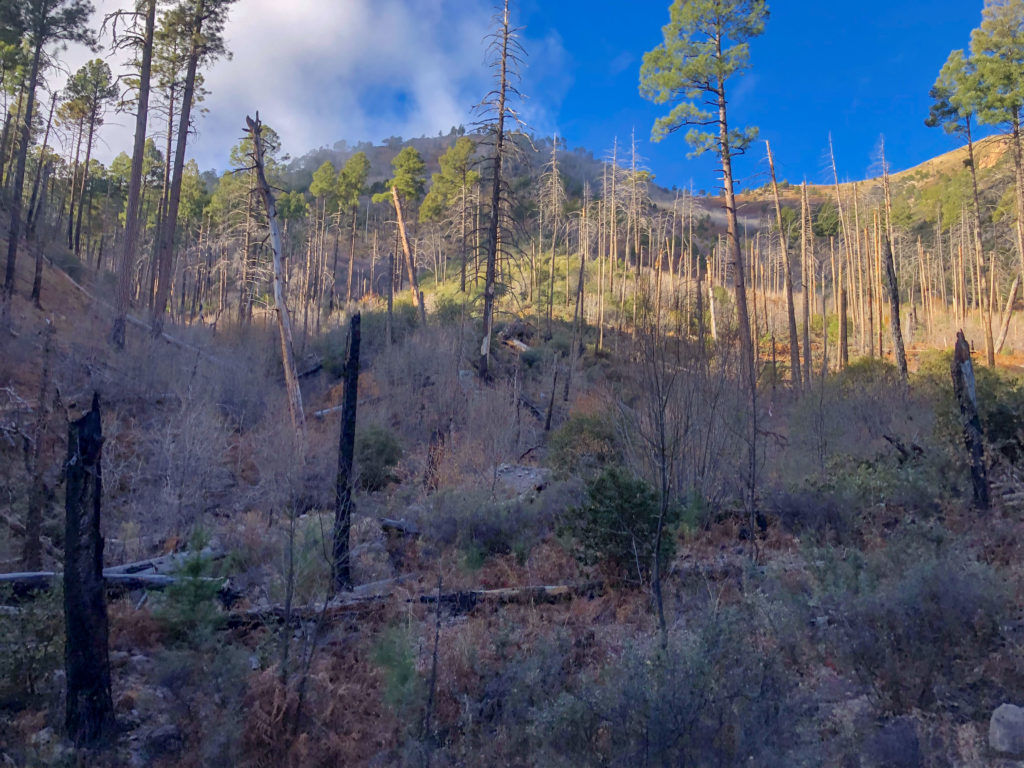
Written by Sam Baggenstos, Wild Stew Field Crew Member.
Greetings, interested reader! It’s Big Sam here, a member of Wild Arizona’s field crew. A few days ago our eight person crew returned from the latest phase of an ongoing restoration project of the South Fork Trail in the Cave Creek region of the Chiricahua Mountains. This project is funded by the National Forest Foundation as well the Chiricahua Regional Council and Friends of Cave Creek Canyon, two partners that we have been working closely with on this and other projects in the area. After spending the initial night at the nearby Idlewild Campground, we hiked in our gear over four miles up South Fork to what we call Happy Camp. Autumn is very much in full swing, and along the way we marveled at the changing colors of the leaves and the cool and crisp temperature of the air.
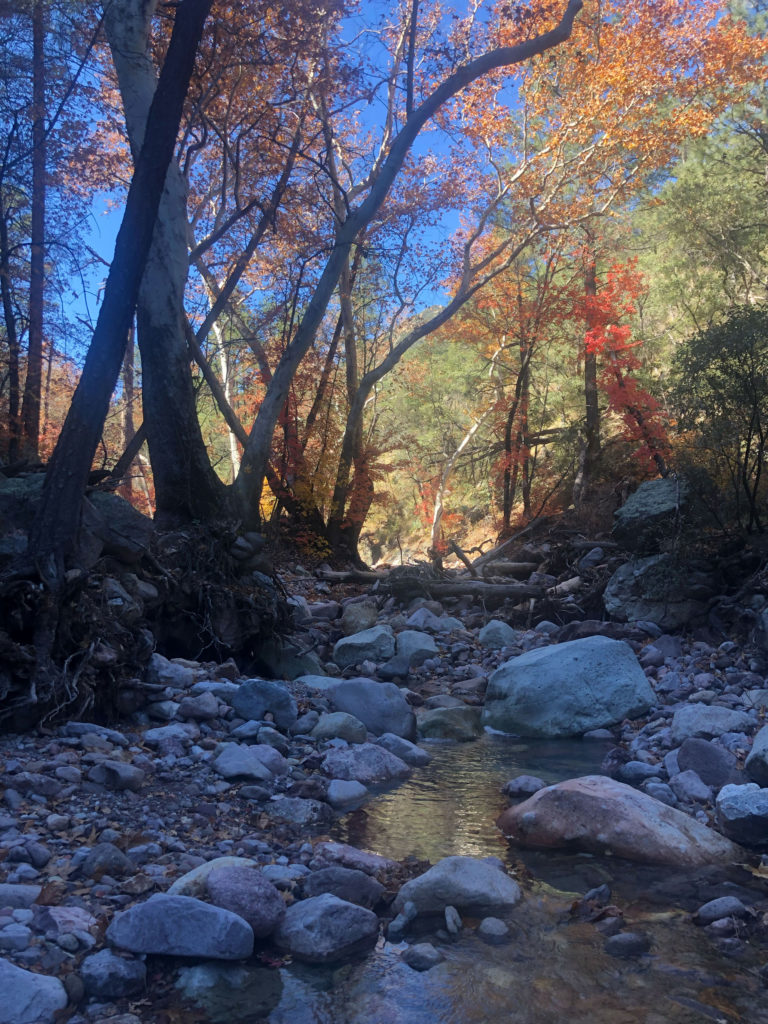
Fall colors along South Fork. Photo by Dexter Kopas. 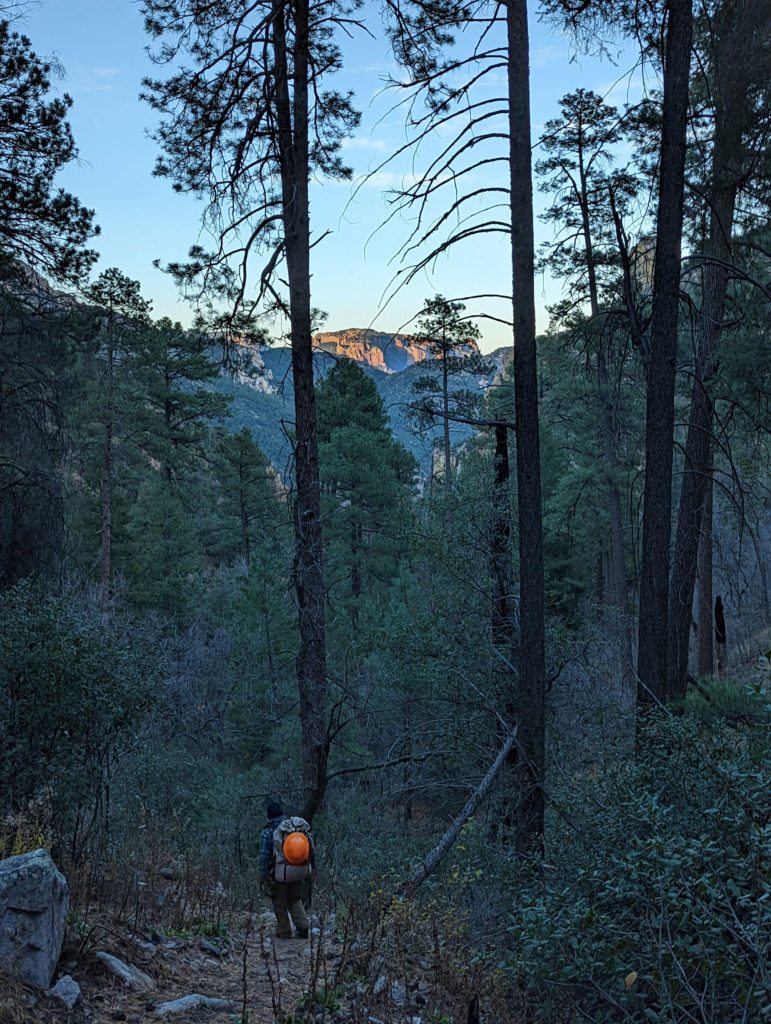
Hiking back to camp with Mt. Sceloporus in the background. Photo by John Clark–Kuebler.
After setting up our tents we started heading further up the trail with an assortment of tools in hand. Our goal was to make it a mile and half up the trail in order to start working on the upper section of the South Fork Trail that has been in disrepair for quite some time. We ended up not making it all the way up that day but instead did some cleanup work on parts of the trail that were previously restored around a year ago by Wild Arizona. The next day, after continuing to do some more maintenance work, we made it the mile and a half up to Aspen Camp where a Wild Arizona volunteer event was taking place to prepare the trail corridor ahead of us. A short ways past Aspen Camp the tread surface of the trail was in poor shape and needed total restoration.

Lauren crushing rock while others haul fill. Photo by Jonathan Patt. 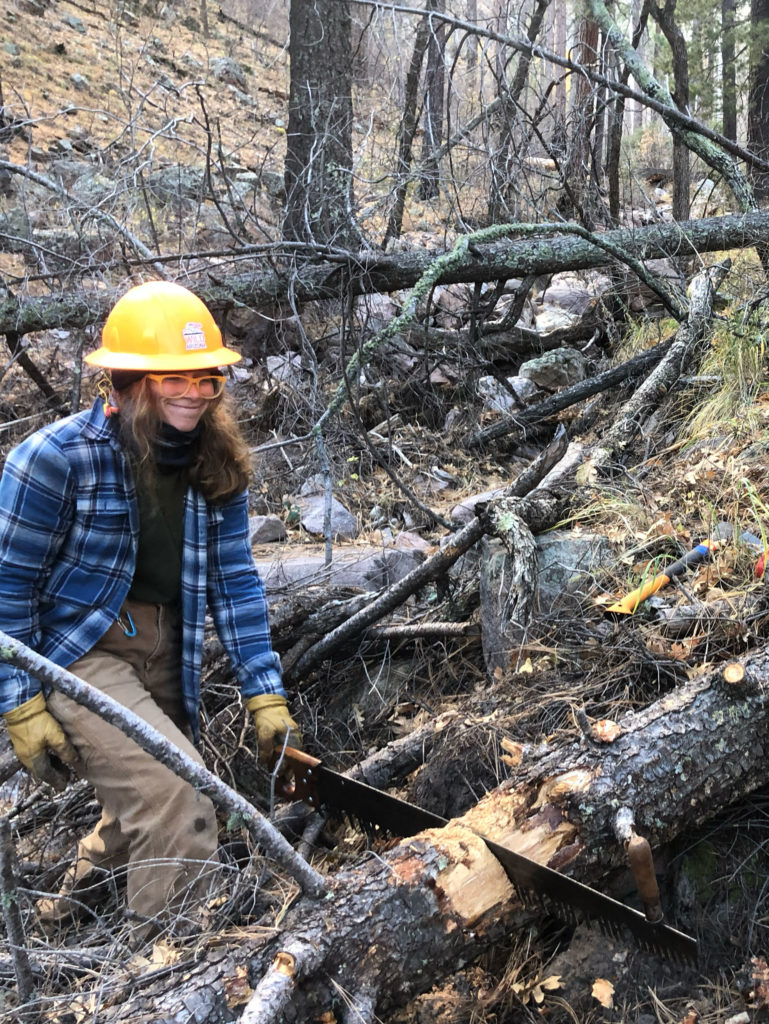
Mary sawing a log. Photo by Dexter Kopas.
For the rest of the hitch we worked on widening the trail corridor and rebuilding the tread. In many places the trail had eroded from rain and/or fire, and in other places downed trees had caused hikers to walk a few feet or more off the trail. Our job was both to return the trail to its original position and to build it in such a way that it will be a sustainable and durable trail for years to come. To do this we not only rebenched the tread, but also installed multiple drains and retaining structures. We also took the time to clean up several washes and built a couple moderately large cairns in order to guide the way. By the time the end of the hitch rolled around we had almost reached High Camp which is nearly 2/3 mile from where we had started treading.
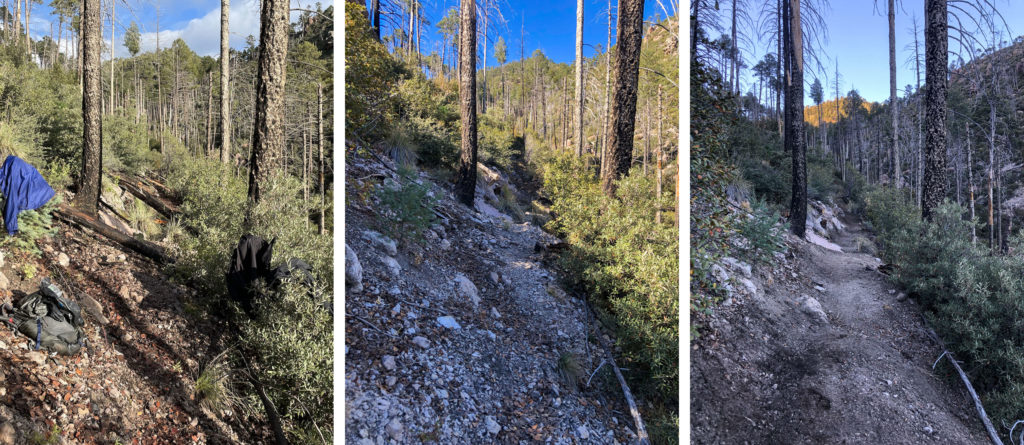
Although the work was taxing and the temperatures got close to or below freezing most nights, our crew stayed in high spirits. One of the ways we did this was by building a campfire each night and engaging in thoughtful and/or silly conversation. It is wonderful to be on a crew where each person has a similar passion for caring for both the environment and one another. A special thanks goes out to Luke Koenig, Wild Arizona’s Volunteer Coordinator, who led the volunteer trip that overlapped with our hitch. Additional thanks to John Sumner and his group of volunteers, who a month or so previously, held a trip up the South Fork Trail doing much of the preparation work to cut logs and brush ahead of our crew.

For our next hitch, we will continue where we left off, continuing to rebuild tread up the South Fork Trail. Hopefully, we get close to its upper terminus with the Crest Trail by the end of that hitch. Until then, I wish you all happy hiking and a happy November!
—Big Sam

Mary and Dexter building a step. Photo by John Clark–Kuebler. 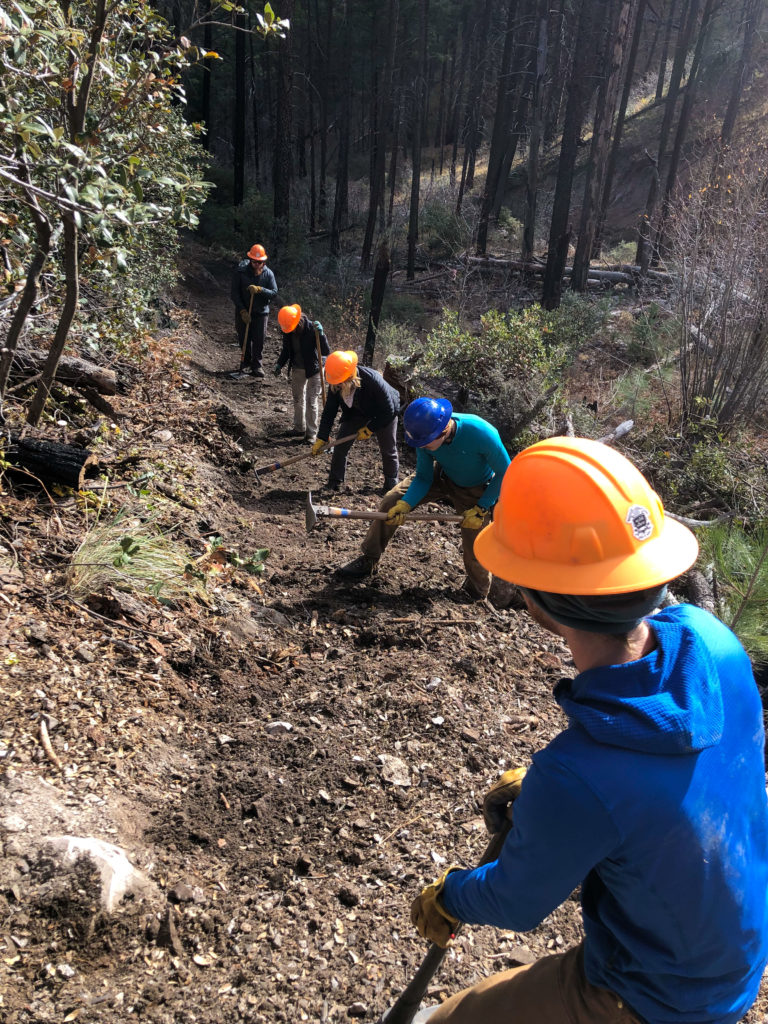
The crew rebuilding tread together. Photo by Jonathan Patt.








